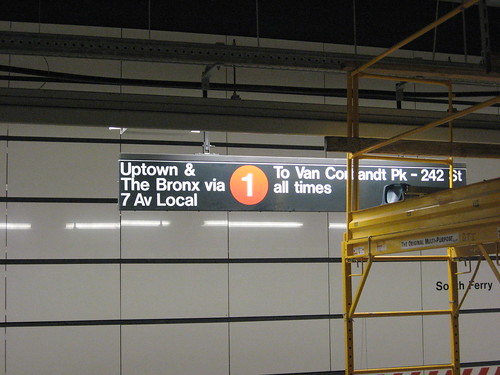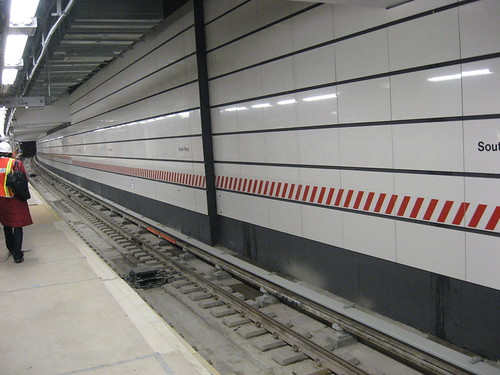
If London can do it, why can’t New York?
A top this post sits a picture from London, England. Our brethren in the United Kingdom have long managed to figure out this whole bus tracking thing. They use a few technologies above ground to display arrival times for buses at street level (and below ground for the Tubes). When last I was in London, I found those boards to be notably accurate.
Alas, in New York, it is not meant to be for the MTA is yet again killing the bus tracking project. Somehow, someway, the MTA just can’t get it to work, and the cost of this failed project could be as high as $14 million. NY1’s Bobby Cuza has more:
It’s a project that was supposed to revolutionize bus travel, telling riders exactly how long until the next bus, and allowing them to see the exact location of buses in real time, whether on the Internet or on a handheld device.
But at a City Council oversight hearing Thursday, MTA officials said “forget about it” and have officially abandoned the project, to the disbelief of lawmakers. “It’s just incredible that in this day and age, we’re nowhere closer to being able to know where the buses are at any given point,” said Queens Councilman John Liu.
Under a contract awarded in 2005, tracking equipment was installed onboard 185 Manhattan buses. In August of 2007, screens began operating in test mode, but were turned off a few months later because the times were inaccurate. They’ve been dark ever since.
The MTA scrapped a similar project in 1996 because, Cuza reports, “satellite signals were lost in the skyscraper canyons of Manhattan — just one of many issues, the MTA says, that makes it difficult to predict arrival times.”
“It’s not just the urban canyons, but the schedules, the tight schedules, the headways, the traffic. The operating environment I think is the most challenging of any city’s,” said Sassan Davoodi, Co-Project Manager, NYC Transit.
Of course, it’s challenging. Of course, it may not be perfect. But as the MTA gears up to remove the trial boards from the already-outfitted stations, I have to wonder what went wrong. Why can’t Davoodi pick up the phone and call his counterpart at Transport for London? Why can’t the people in charge put two and two together to come up with a viable tracking plan for New York? GPS-based navigation works in the city; this should do.
John Liu, long a councilman I’ve regarded with a wary eye, summed it all up. “After nearly 20 years, there’s been zero progress,” he said. “And that’s pathetic.”




 When he’s not down in Washington, Senator Chuck Schumer lives around on the corner from me in a nice building on Prospect Park West. His base of power stems from New York City; his roots are in Kings County. Where has he been, then, amidst all of this talk of transit stimulus plans and the financial woes of the MTA?
When he’s not down in Washington, Senator Chuck Schumer lives around on the corner from me in a nice building on Prospect Park West. His base of power stems from New York City; his roots are in Kings County. Where has he been, then, amidst all of this talk of transit stimulus plans and the financial woes of the MTA?